Zhiqing Wei
Coherent Compensation-Based Sensing for Long-Range Targets in Integrated Sensing and Communication System
Aug 17, 2025Abstract:Integrated sensing and communication (ISAC) is a promising candidate technology for 6G due to its improvement in spectral efficiency and energy efficiency. Orthogonal frequency division multiplexing (OFDM) signal is a mainstream candidate ISAC waveform. However, there are inter-symbol interference (ISI) and inter-carrier interference (ICI) when the round-trip delay exceeds the cyclic prefix (CP) duration for OFDM signals, which limits the maximum sensing range of ISAC system. When detecting a long-range target, the wide beam inevitably covers the close-range target, of which the echo's power is much larger than that of the long-range target. In order to tackle the above problem, a multiple signal classification (MUSIC) and least squares (LS)-based spatial signal separation method is proposed to separate the echo signals reflected from different targets. Moreover, a coherent compensation-based sensing signal processing method at the receiver is proposed to enhance the signal to interference plus noise power ratio (SINR) of the OFDM block for generating the range-Doppler map (RDM) with higher SINR. Simulation results reveal that the proposed method greatly enhances the SINR of RDM by 10 dB for a target at 500 m compared with two-dimensional fast Fourier transform (2D-FFT) method. Besides, the detection probability is also significantly improved compared to the benchmarking method.
* 15 pages, 10 figures
Subspace Fitting Approach for Wideband Near-Field Localization
Aug 06, 2025Abstract:Two subspace fitting approaches are proposed for wideband near-field localization. Unlike in conventional far-field systems, where distance and angle can be estimated separately, spherical wave propagation in near-field systems couples these parameters. We therefore derive a frequency-domain near-field signal model for multi-target wideband systems and develop a subspace fitting-based MUSIC method that jointly estimates distance and angle. To reduce complexity, a Fresnel approximation MUSIC algorithm is further introduced to decouple the distance and angle parameters. Numerical results verify the effectiveness of both proposed approaches.
Multipath Component-Enhanced Signal Processing for Integrated Sensing and Communication Systems
Jun 09, 2025Abstract:Integrated sensing and communication (ISAC) has gained traction in academia and industry. Recently, multipath components (MPCs), as a type of spatial resource, have the potential to improve the sensing performance in ISAC systems, especially in richly scattering environments. In this paper, we propose to leverage MPC and Khatri-Rao space-time (KRST) code within a single ISAC system to realize high-accuracy sensing for multiple dynamic targets and multi-user communication. Specifically, we propose a novel MPC-enhanced sensing processing scheme with symbol-level fusion, referred to as the "SL-MPS" scheme, to achieve high-accuracy localization of multiple dynamic targets and empower the single ISAC system with a new capability of absolute velocity estimation for multiple targets with a single sensing attempt. Furthermore, the KRST code is applied to flexibly balance communication and sensing performance in richly scattering environments. To evaluate the contribution of MPCs, the closed-form Cram\'er-Rao lower bounds (CRLBs) of location and absolute velocity estimation are derived. Simulation results illustrate that the proposed SL-MPS scheme is more robust and accurate in localization and absolute velocity estimation compared with the existing state-of-the-art schemes.
Near-Field Motion Parameter Estimation: A Variational Bayesian Approach
Feb 22, 2025Abstract:A near-field motion parameter estimation method is proposed. In contract to far-field sensing systems, the near-field sensing system leverages spherical-wave characteristics to enable full-vector location and velocity estimation. Despite promising advantages, the near-field sensing system faces a significant challenge, where location and velocity parameters are intricately coupled within the signal. To address this challenge, a novel subarray-based variational message passing (VMP) method is proposed for near-field joint location and velocity estimation. First, a factor graph representation is introduced, employing subarray-level directional and Doppler parameters as intermediate variables to decouple the complex location-velocity dependencies. Based on this, the variational Bayesian inference is employed to obtain closed-form posterior distributions of subarray-level parameters. Subsequently, the message passing technique is employed, enabling tractable computation of location and velocity marginal distributions. Two implementation strategies are proposed: 1) System-level fusion that aggregates all subarray posteriors for centralized estimation, or 2) Subarray-level fusion where locally processed estimates from subarrays are fused through Guassian product rule. Cram\'er-Rao bounds for location and velocity estimation are derived, providing theoretical performance limits. Numerical results demonstrate that the proposed VMP method outperforms existing approaches while achieving a magnitude lower complexity. Specifically, the proposed VMP method achieves centimeter-level location accuracy and sub-m/s velocity accuracy. It also demonstrates robust performance for high-mobility targets, making the proposed VMP method suitable for real-time near-field sensing and communication applications.
Multipath Component-Aided Signal Processing for Integrated Sensing and Communication Systems
Dec 31, 2024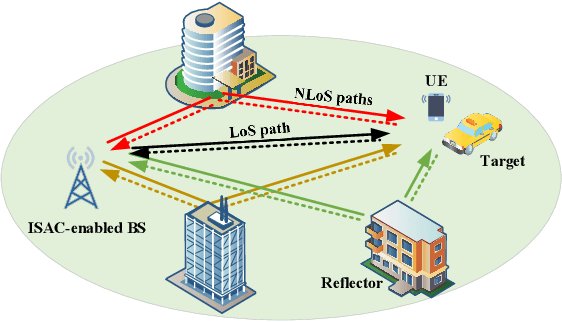
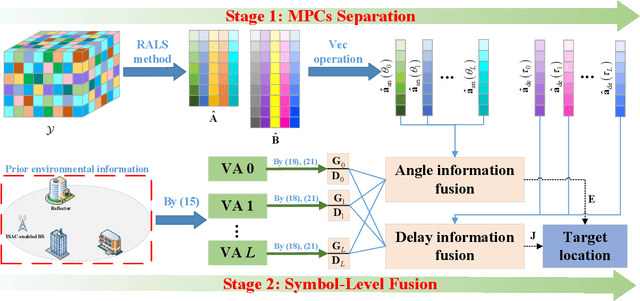

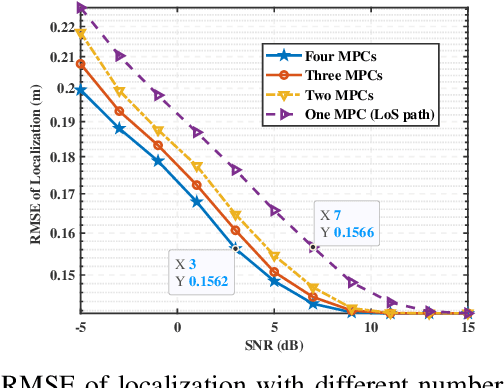
Abstract:Integrated sensing and communication (ISAC) has emerged as a pivotal enabling technology for sixth-generation (6G) mobile communication system. The ISAC research in dense urban areas has been plaguing by severe multipath interference, propelling the thorough research of ISAC multipath interference elimination. However, transforming the multipath component (MPC) from enemy into friend is a viable and mutually beneficial option. In this paper, we preliminarily explore the MPC-aided ISAC signal processing and apply a space-time code to improve the ISAC performance. Specifically, we propose a symbol-level fusion for MPC-aided localization (SFMC) scheme to achieve robust and high-accuracy localization, and apply a Khatri-Rao space-time (KRST) code to improve the communication and sensing performance in rich multipath environment. Simulation results demonstrate that the proposed SFMC scheme has more robust localization performance with higher accuracy, compared with the existing state-of-the-art schemes. The proposed SFMC would benefit highly reliable communication and sub-meter level localization in rich multipath scenarios.
Channel-Adaptive Wireless Image Semantic Transmission with Learnable Prompts
Nov 15, 2024



Abstract:Recent developments in Deep learning based Joint Source-Channel Coding (DeepJSCC) have demonstrated impressive capabilities within wireless semantic communications system. However, existing DeepJSCC methodologies exhibit limited generalization ability across varying channel conditions, necessitating the preparation of multiple models. Optimal performance is only attained when the channel status during testing aligns precisely with the training channel status, which is very inconvenient for real-life applications. In this paper, we introduce a novel DeepJSCC framework, termed Prompt JSCC (PJSCC), which incorporates a learnable prompt to implicitly integrate the physical channel state into the transmission system. Specifically, the Channel State Prompt (CSP) module is devised to generate prompts based on diverse SNR and channel distribution models. Through the interaction of latent image features with channel features derived from the CSP module, the DeepJSCC process dynamically adapts to varying channel conditions without necessitating retraining. Comparative analyses against leading DeepJSCC methodologies and traditional separate coding approaches reveal that the proposed PJSCC achieves optimal image reconstruction performance across different SNR settings and various channel models, as assessed by Peak Signal-to-Noise Ratio (PSNR) and Learning-based Perceptual Image Patch Similarity (LPIPS) metrics. Furthermore, in real-world scenarios, PJSCC shows excellent memory efficiency and scalability, rendering it readily deployable on resource-constrained platforms to facilitate semantic communications.
Interference Management in MIMO-ISAC Systems: A Transceiver Design Approach
Jul 07, 2024
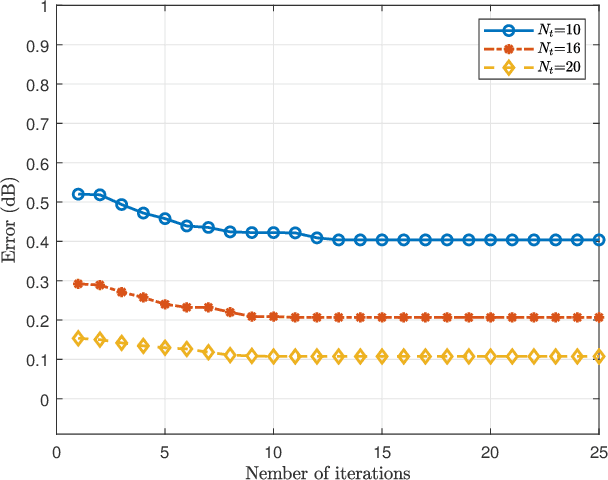
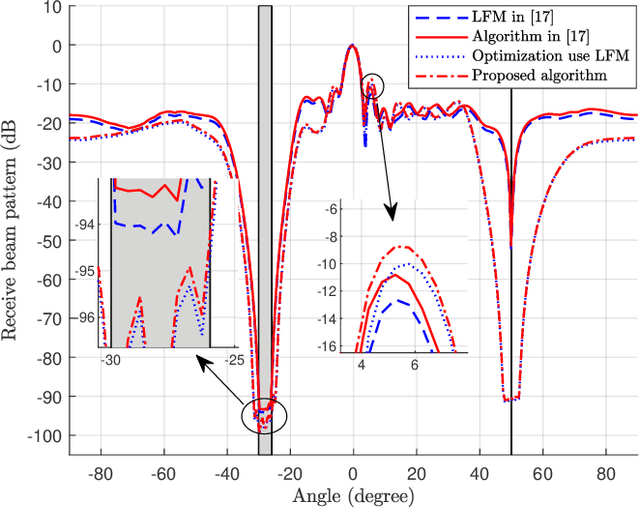
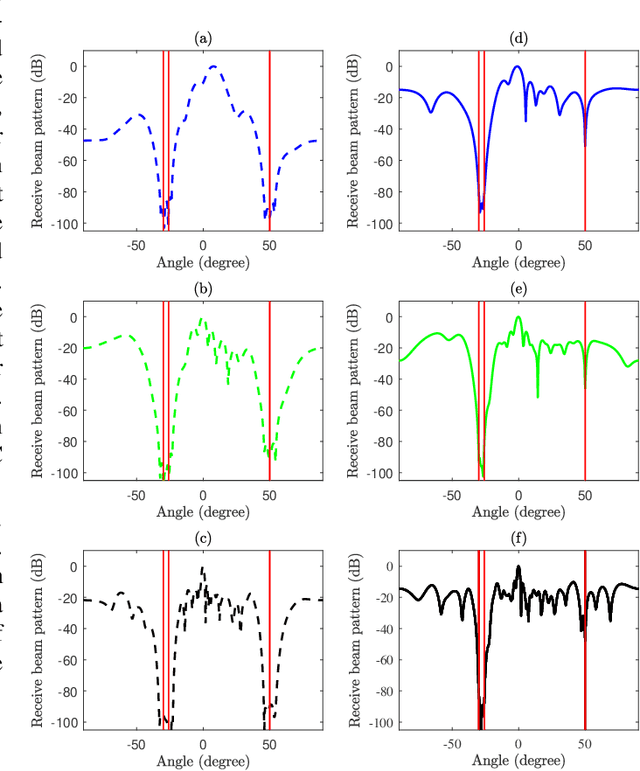
Abstract:The integrated sensing and communication (ISAC) system under multi-input multi-output (MIMO) architecture achieves dual functionalities of sensing and communication on the same platform by utilizing spatial gain, which provides a feasible paradigm facing spectrum congestion. However, the dual functionalities of sensing and communication operating simultaneously in the same platform bring severe interference in the ISAC systems. Facing this challenge, we propose a joint optimization framework for transmit beamforming and receive filter design for ISAC systems with MIMO architecture. We aim to maximize the signal-to-clutter-plus-noise ratio (SCNR) at the receiver while considering various constraints such as waveform similarity, power budget, and communication performance requirements to ensure the integration of the dual functionalities. In particular, the overall transmit beamforming is refined into sensing beamforming and communication beamforming, and a quadratic transformation (QT) is introduced to relax and convert the complex non-convex optimization objective. An efficient algorithm based on covariance matrix tapers (CMT) is proposed to restructure the clutter covariance matrix considering the mismatched steering vector, thereby improving the robustness of the ISAC transceiver design. Numerical simulations are provided to demonstrate the effectiveness of the proposed algorithm.
Neural Probabilistic Logic Learning for Knowledge Graph Reasoning
Jul 04, 2024



Abstract:Knowledge graph (KG) reasoning is a task that aims to predict unknown facts based on known factual samples. Reasoning methods can be divided into two categories: rule-based methods and KG-embedding based methods. The former possesses precise reasoning capabilities but finds it challenging to reason efficiently over large-scale knowledge graphs. While gaining the ability to reason over large-scale knowledge graphs, the latter sacrifices reasoning accuracy. This paper aims to design a reasoning framework called Neural Probabilistic Logic Learning(NPLL) that achieves accurate reasoning on knowledge graphs. Our approach introduces a scoring module that effectively enhances the expressive power of embedding networks, striking a balance between model simplicity and reasoning capabilities. We improve the interpretability of the model by incorporating a Markov Logic Network based on variational inference. We empirically evaluate our approach on several benchmark datasets, and the experimental results validate that our method substantially enhances the accuracy and quality of the reasoning results.
Hybrid Beamforming Design for Near-Field ISAC with Modular XL-MIMO
Jun 18, 2024



Abstract:A novel modular extremely large-scale multiple-input-multiple-output (XL-MIMO) integrated sensing and communication (ISAC) framework is proposed in this paper. We consider a downlink ISAC scenario and exploit the modular array architecture to enhance the communication spectral efficiency and sensing resolution while reducing the channel modeling complexity by employing the hybrid spherical and planar wavefront model. Considering the hybrid digital-analog structure inherent to modular arrays, we formulate a joint analog-digital beamforming design problem based on the communication spectral efficiency and sensing signal-to-clutter-plus-noise ratio (SCNR). By exploring the structural similarity of the communication and sensing channels, it is proved that the optimal transmit covariance matrix lies in the subspace spanned by the subarray response vectors, yielding a closed-form solution for the optimal analog beamformer. Consequently, the joint design problem is transformed into a low-dimensional rank-constrained digital beamformer optimization. We first propose a manifold optimization method that directly optimizes the digital beamformer on the rank-constrained Stiefel manifold. Additionally, we develop an semidefinite relaxation (SDR)-based approach that relaxes the rank constraint and employ the randomization technique to obtain a near-optimal solution. Simulation results demonstrate the effectiveness of the proposed modular XL-MIMO ISAC framework and algorithms.
Carrier Aggregation Enabled MIMO-OFDM Integrated Sensing and Communication
May 17, 2024



Abstract:In the evolution towards the forthcoming era of sixth-generation (6G) mobile communication systems characterized by ubiquitous intelligence, integrated sensing and communication (ISAC) is in a phase of burgeoning development. However, the capabilities of communication and sensing within single frequency band fall short of meeting the escalating demands. To this end, this paper introduces a carrier aggregation (CA)- enabled multi-input multi-output orthogonal frequency division multiplexing (MIMO-OFDM) ISAC system fusing the sensing data on high and low-frequency bands by symbol-level fusion for ultimate communication experience and high-accuracy sensing. The challenges in sensing signal processing introduced by CA include the initial phase misalignment of the echo signals on high and low-frequency bands due to attenuation and radar cross section, and the fusion of the sensing data on high and lowfrequency bands with different physical-layer parameters. To this end, the sensing signal processing is decomposed into two stages. In the first stage, the problem of initial phase misalignment of the echo signals on high and low-frequency bands is solved by the angle compensation, space-domain diversity and vector crosscorrelation operations. In the second stage, this paper realizes symbol-level fusion of the sensing data on high and low-frequency bands through sensing vector rearrangement and cyclic prefix adjustment operations, thereby obtaining high-precision sensing performance. Then, the closed-form communication mutual information (MI) and sensing Cramer-Rao lower bound (CRLB) for the proposed ISAC system are derived to explore the theoretical performance bound with CA. Simulation results validate the feasibility and superiority of the proposed ISAC system.
 Add to Chrome
Add to Chrome Add to Firefox
Add to Firefox Add to Edge
Add to Edge